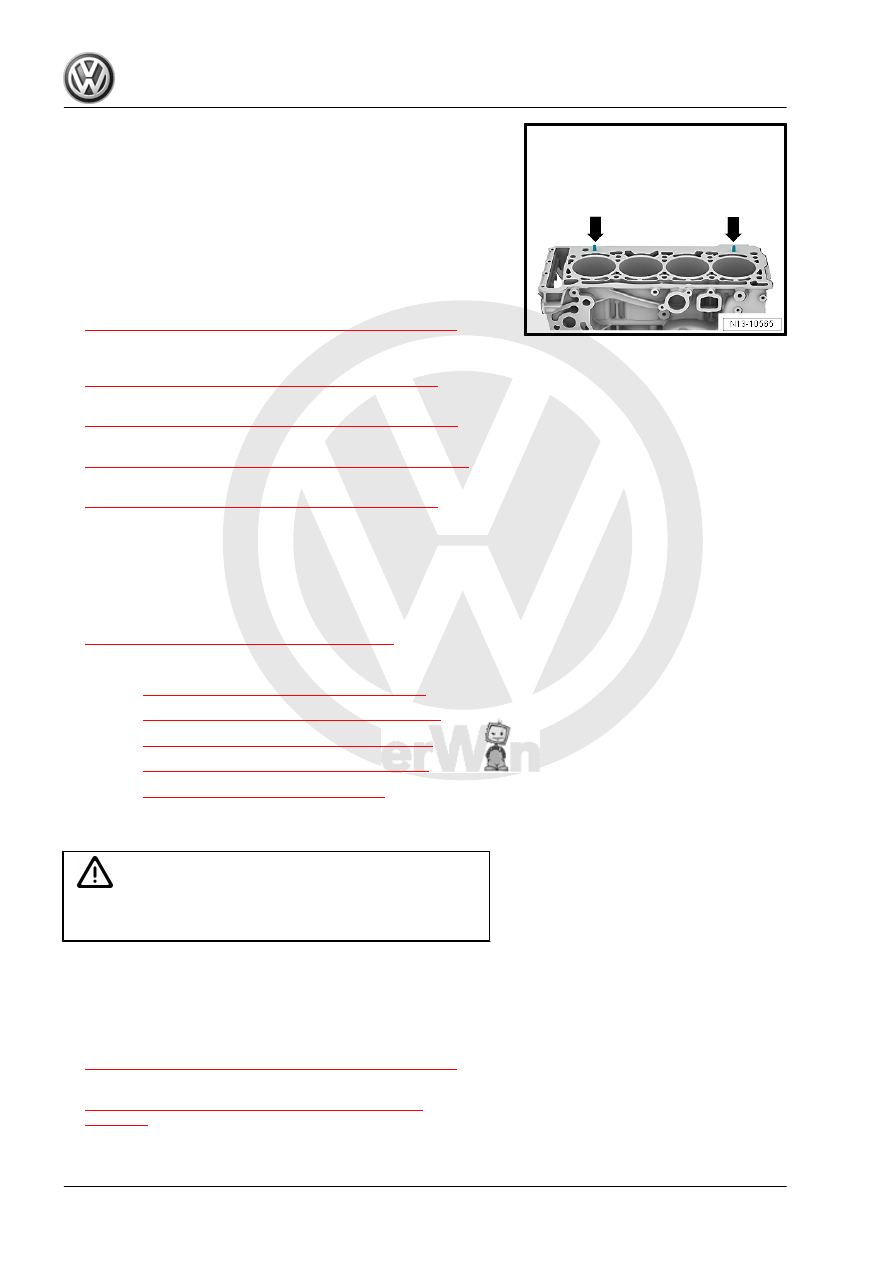Volkswagen Golf / Golf GTI / Golf Variant. Manual - part 666

♦ Pay attention to centering pins in cylinder block -arrows-.
♦ Cylinder head gasket installed position: the part number must
be readable from the intake side.
– If the crankshaft was turned in the meanwhile: bring the piston
for cylinder 1 to Top Dead Center (TDC) and then turn the
crankshaft back just a little. Take care not to damage the timing
chain in the process.
– Set cylinder head in place.
– Install and tighten the cylinder head bolt. Tightening se‐
quence. Refer to
⇒ Fig. ““Cylinder Head Tightening Sequence”“ , page 92
– Install the camshaft but the camshaft timing chain is not in‐
stalled yet. Refer to
⇒ “4.2 Camshaft, Removing and Installing”, page 136
.
– Support the engine in its installed position again. Refer to
⇒ “2.5 Engine, Supporting in Installed Position”, page 33
.
– Remove the engine mount and the engine support. Refer to
⇒ “1.6 Engine Support, Removing and Installing”, page 55
.
– Now install the camshaft timing chain. Refer to
⇒ “4.2 Camshaft, Removing and Installing”, page 136
.
Further assembly is performed in the reverse order of removal,
thereby observing the following:
– Replace the engine oil. Refer to ⇒ Maintenance ; Booklet
36.1 ; Procedure Descriptions; Engine Oil, Draining, Replacing
Oil Filter, and Filling .
– Fill with new coolant. Refer to
⇒ “1.3 Coolant, Draining and Filling”, page 217
.
Tightening Specifications
♦ Refer to
⇒ “1.1 Overview - Cylinder Head”, page 90
♦ Refer to
⇒ “4.1 Overview - Intake Manifold”, page 296
♦ Refer to
⇒ “3.1 Overview - Coolant Pipes”, page 241
♦ Refer to
⇒ “1.1 Overview - Turbocharger”, page 256
.
♦ Refer to
⇒ “1.1 Overview - Muffler”, page 338
.
1.4
Vacuum Pump, Removing and Installing
Caution
This procedure contains mandatory replaceable parts. Refer
to component overview prior to starting procedure.
Mandatory Replacement Parts
♦ Seal - Vacuum Pump
Removing
– Remove the engine cover. Refer to
⇒ “3.1 Engine Cover, Removing and Installing”, page 38
– Remove the air filter housing. Refer to